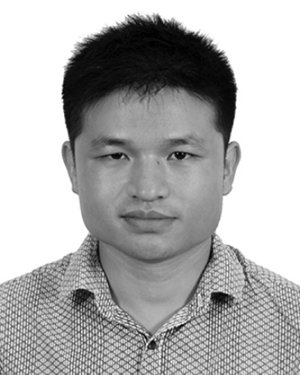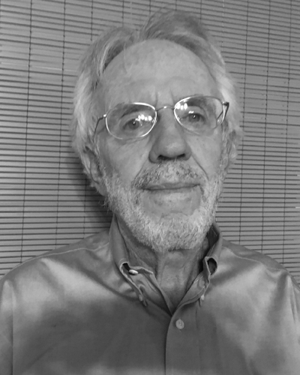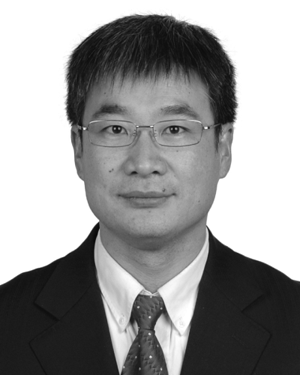Abstract:
The Chang’E-1 and E-2 (CE-1 and CE-2) orbital sounders provided high-resolution global maps of lunar microwave brightness temperatures (TBs) at wavelengths of 0.8, 1.55, ...Show MoreMetadata
Abstract:
The Chang’E-1 and E-2 (CE-1 and CE-2) orbital sounders provided high-resolution global maps of lunar microwave brightness temperatures (TBs) at wavelengths of 0.8, 1.55, 3.85, and 10 cm covering approximately two years of data over the 2007–2010 time frame. The four-channel microwave radiometers (MRMs) effectively sampled the upper ~2 m of the lunar regolith and are diagnostic of thermal and electrical properties, including mineralogy, rock abundance, and, potentially, interior heat flow. Early comparisons of colocated data between the two instruments revealed ~10–20 K offsets between the CE-1 and CE-2 measurements that required in- flight recalibration efforts. These have included comparisons with model predictions at Apollo sites as well as adjustments of the cold sky horn reference temperatures to include contamination from lunar surface emissions. This article proposes an in- flight recalibration methodology that focuses on correction of the preflight transfer coefficients that determine the relative importance of component losses along the radiometer hardware paths connecting the antennas to the detectors. It is shown that for each channel, a single parameter, representing the ratio of the cold sky and main antenna transfer coefficients, can be constrained by knowledge of the stable regolith physical temperatures below the diurnal-varying layer and is sufficient to establish values for the complete set of hardware transfer coefficients. The in- flight comparisons proposed for recalibration are based on backside highland models of regolith thermal properties. Potential remaining offsets of the recalibrated MRM data are evaluated in terms of parameter uncertainties of our chosen nominal thermal model.
Published in: IEEE Transactions on Geoscience and Remote Sensing ( Volume: 60)
Funding Agency:

State Key Laboratory of Lunar and Planetary Science, Macau University of Science and Technology, Taipa, Macau
Guoping Hu received the B.S. degree in communication engineering from Nanchang University, Nanchang, China, in 2006, and the M.S. and Ph.D. degrees in microwave and electromagnetic from the Huazhong University of Science and Technology (HUST), Wuhan, China, in 2008 and 2013, respectively.
He held a post-doctoral position at the Space Science Institute, Macau University of Science and Technology (MUST), Macau, from 2014 to ...Show More
Guoping Hu received the B.S. degree in communication engineering from Nanchang University, Nanchang, China, in 2006, and the M.S. and Ph.D. degrees in microwave and electromagnetic from the Huazhong University of Science and Technology (HUST), Wuhan, China, in 2008 and 2013, respectively.
He held a post-doctoral position at the Space Science Institute, Macau University of Science and Technology (MUST), Macau, from 2014 to ...View more

Jet Propulsion Laboratory, California Institute of Technology, Pasadena, CA, USA
Stephen J. Keihm received the B.S. degree in physics from Fordham University, Bronx, NY, USA, in 1968, the B.S. degree in mechanical engineering from Columbia University, New York, NY, USA, in 1969, and the M.S. degree in astronautical science from Stanford University, Stanford, CA, USA, in 1970.
From 1970 to 1978, he worked as a Research Assistant and then a Staff Associate at the Lamont-Doherty Geological Observatory, Co...Show More
Stephen J. Keihm received the B.S. degree in physics from Fordham University, Bronx, NY, USA, in 1968, the B.S. degree in mechanical engineering from Columbia University, New York, NY, USA, in 1969, and the M.S. degree in astronautical science from Stanford University, Stanford, CA, USA, in 1970.
From 1970 to 1978, he worked as a Research Assistant and then a Staff Associate at the Lamont-Doherty Geological Observatory, Co...View more

Key Laboratory of Microwave Remote Sensing, National Space Science Center, Chinese Academy of Sciences, Beijing, China
Zhenzhan Wang was born in 1969. He received the Ph.D. degree in computer science and applied research from the Chinese Academy of Sciences, Beijing, China, in 2005.
From 2005 to 2018, he was a Researcher with the National Space Science Center, Chinese Academy of Sciences. He hosted and participated in more than ten major national research projects. He has participated in the “Shenzhou” on the fourth, the “Shenzhou” on the ...Show More
Zhenzhan Wang was born in 1969. He received the Ph.D. degree in computer science and applied research from the Chinese Academy of Sciences, Beijing, China, in 2005.
From 2005 to 2018, he was a Researcher with the National Space Science Center, Chinese Academy of Sciences. He hosted and participated in more than ten major national research projects. He has participated in the “Shenzhou” on the fourth, the “Shenzhou” on the ...View more

State Key Laboratory of Lunar and Planetary Science, Macau University of Science and Technology, Taipa, Macau
Guoping Hu received the B.S. degree in communication engineering from Nanchang University, Nanchang, China, in 2006, and the M.S. and Ph.D. degrees in microwave and electromagnetic from the Huazhong University of Science and Technology (HUST), Wuhan, China, in 2008 and 2013, respectively.
He held a post-doctoral position at the Space Science Institute, Macau University of Science and Technology (MUST), Macau, from 2014 to 2017, where he is currently an Assistant Professor. His research interests include microwave remote sensing, modeling of microwave radiometry, and retrieval and processing techniques from microwave data.
Guoping Hu received the B.S. degree in communication engineering from Nanchang University, Nanchang, China, in 2006, and the M.S. and Ph.D. degrees in microwave and electromagnetic from the Huazhong University of Science and Technology (HUST), Wuhan, China, in 2008 and 2013, respectively.
He held a post-doctoral position at the Space Science Institute, Macau University of Science and Technology (MUST), Macau, from 2014 to 2017, where he is currently an Assistant Professor. His research interests include microwave remote sensing, modeling of microwave radiometry, and retrieval and processing techniques from microwave data.View more

Jet Propulsion Laboratory, California Institute of Technology, Pasadena, CA, USA
Stephen J. Keihm received the B.S. degree in physics from Fordham University, Bronx, NY, USA, in 1968, the B.S. degree in mechanical engineering from Columbia University, New York, NY, USA, in 1969, and the M.S. degree in astronautical science from Stanford University, Stanford, CA, USA, in 1970.
From 1970 to 1978, he worked as a Research Assistant and then a Staff Associate at the Lamont-Doherty Geological Observatory, Columbia University. While at Lamont, he served as a Co-Investigator for the Apollo 15 and 17 lunar heat flow experiments and a Principal Investigator in studies of the thermal and electrical properties of the lunar regolith. In 1978, he joined the Planetary Science Institute, Pasadena, CA, USA, where he conducted theoretical studies for the interpretation of data from the remote sensing of planetary surfaces. Since 1982, he has been at the Jet Propulsion Laboratory, California Institute of Technology, Pasadena. At JPL, he has developed lunar calibration models for the Cosmic Background Explorer (COBE) Experiment, the Microwave Limb Sounder (MLS) instrument, and Rosetta Microwave Radiometer (MIRO) instrument. He has also worked extensively in the areas of algorithm development and data interpretation for Earth-based, aircraft, and satellite microwave measurements of the atmosphere and sea surface. He has also been the Instrument Scientist for the Cassini Radio Science Tropospheric Calibration System and a Supervisor of the Ground-Based Microwave Applications Group, JPL. Currently, he is retired from JPL and working part time as a planetary science consultant.
Stephen J. Keihm received the B.S. degree in physics from Fordham University, Bronx, NY, USA, in 1968, the B.S. degree in mechanical engineering from Columbia University, New York, NY, USA, in 1969, and the M.S. degree in astronautical science from Stanford University, Stanford, CA, USA, in 1970.
From 1970 to 1978, he worked as a Research Assistant and then a Staff Associate at the Lamont-Doherty Geological Observatory, Columbia University. While at Lamont, he served as a Co-Investigator for the Apollo 15 and 17 lunar heat flow experiments and a Principal Investigator in studies of the thermal and electrical properties of the lunar regolith. In 1978, he joined the Planetary Science Institute, Pasadena, CA, USA, where he conducted theoretical studies for the interpretation of data from the remote sensing of planetary surfaces. Since 1982, he has been at the Jet Propulsion Laboratory, California Institute of Technology, Pasadena. At JPL, he has developed lunar calibration models for the Cosmic Background Explorer (COBE) Experiment, the Microwave Limb Sounder (MLS) instrument, and Rosetta Microwave Radiometer (MIRO) instrument. He has also worked extensively in the areas of algorithm development and data interpretation for Earth-based, aircraft, and satellite microwave measurements of the atmosphere and sea surface. He has also been the Instrument Scientist for the Cassini Radio Science Tropospheric Calibration System and a Supervisor of the Ground-Based Microwave Applications Group, JPL. Currently, he is retired from JPL and working part time as a planetary science consultant.View more

Key Laboratory of Microwave Remote Sensing, National Space Science Center, Chinese Academy of Sciences, Beijing, China
Zhenzhan Wang was born in 1969. He received the Ph.D. degree in computer science and applied research from the Chinese Academy of Sciences, Beijing, China, in 2005.
From 2005 to 2018, he was a Researcher with the National Space Science Center, Chinese Academy of Sciences. He hosted and participated in more than ten major national research projects. He has participated in the “Shenzhou” on the fourth, the “Shenzhou” on the third, the situation on the third, and the Chang E One satellite and other satellite microwave and optical remote sensor calibration/inspection and applied research tasks. He was involved in the research of new technologies and applications of microwave remote sensing technology, including polarimetric microwave radiometry technology research, applied research inversion, microwave remote sensor calibration parameters of the marine atmosphere/inspection technology research, and terahertz detection mechanism of atmospheric research.
Zhenzhan Wang was born in 1969. He received the Ph.D. degree in computer science and applied research from the Chinese Academy of Sciences, Beijing, China, in 2005.
From 2005 to 2018, he was a Researcher with the National Space Science Center, Chinese Academy of Sciences. He hosted and participated in more than ten major national research projects. He has participated in the “Shenzhou” on the fourth, the “Shenzhou” on the third, the situation on the third, and the Chang E One satellite and other satellite microwave and optical remote sensor calibration/inspection and applied research tasks. He was involved in the research of new technologies and applications of microwave remote sensing technology, including polarimetric microwave radiometry technology research, applied research inversion, microwave remote sensor calibration parameters of the marine atmosphere/inspection technology research, and terahertz detection mechanism of atmospheric research.View more


